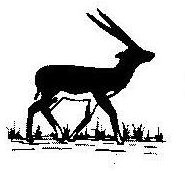Flora and fauna of Chennai
Chennai has the unique distinction of being a metropolitan city with its own forest within city limits. The Guindy National Park is undoubtedly the lung of the city. The people living around the park know that the temperature they experience even in summer is lower than that experienced in other parts of the city.
Like all national parks today, the Guindy Park was originally a game reserve. It was in 1958 that the area of 400 hectares was handed to the Tamil Nadu Forest Department. Today the National Park has only 270.57 hectares.
The biodiversity within the Guindy National Park is quite amazing, despite the fact that it is a very small area surrounded by houses and habitation. The vegetation is mainly of the tropical dry evergreen type, and over 350 species of plants have been found including trees, shrubs, climbers, herbs and grasses. Chital and Blackbuck graze in the open grassland on the northern end of the park. Nocturnal animals include the toddy cat, civets, jungle cat, pangolin, and hedgehog. The dense forest, grasslands and water-bodies provide an ideal habitat for a large species of birds, some not seen anywhere else in Chennai.
Apart from snakes, certain species of tortoise and turtles, lizards, geckos, chameleons and the common Indian monitor lizard are also found here.
The Theosophical Society is another well wooded place that offers sanctuary to many birds, reptiles, arthropods, mammals as well as many indigenous and exotic plant species.
The Adyar Estuary (Poonga) offers good feeding ground for various waders and other water birds all year long. Pallikaranai Marsh, another wetland within city limits is home to many waders and herons. It hosts many winged visitors during the winter months. It also supports many reptiles, fish, amphibians as well as reeds and bulrushes. Unfortunately, this wetland is being degraded by pollution, garbage dumping and is converted into housing colonies, railway terminus, institutions etc. with utter disregard for its wildlife and ecosystem values.
Nanmangalam Reserve Forest is one of the few homes for the endangered Eurasian Eagle Owl (Bubo bubo). It also offers excellent birding opportunities, as well as a haven for people studying reptiles and arthropods.
The Arignar Anna Zoological Park (better known as Vandalur Zoo) is located southwest of the city and covers an area of 5.1 square km. The Zoo was formerly located in Park Town under the name "Madras Zoo", and was the oldest zoo in the country (established 1854). It was moved to its current suburban location in 1980. It has about eighty species on display and includes a lion safari and two aviaries.
The southern stretches of the beach, from Tiruvanmiyur to Neelangarai, are favoured by the endangered Olive Ridley turtles to lay their eggs every winter, as are other beaches in Tamil Nadu and Orissa. At that time, many conservation volunteers work on the beach during the night to protect the eggs or to remove them to a hatchery. Hatchlings are usually released to the sea in March or April.
South of the city, along the East Coast Road, is the Madras Crocodile Bank Trust, which hosts several fresh-water and salt-water crocodiles, alligators, gharials, and also turtles and snakes. It is considered an important institute for herpetological research, and performs services such as snake venom extraction for preparing antidotes.
